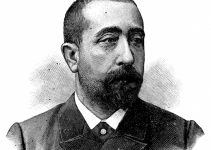Neuroleptic Malignant Syndrome or NMS is an extremely uncommon, but fatal, idiosyncratic response to neuroleptic drugs characterized by muscular rigidity, fever, autonomic dysfunction, and altered mental status. NMS often happens a little after neuroleptic treatment is initiated, or after an increase in dosage.
Other Names for Neuroleptic Malignant Syndrome
- Drug-Induced Movement Disorder (DMD)
- Hyperthermia
- Neuroleptic-Induced Acute Dystonia (NAD)
Causes
Researchers are yet to discover the inherent cause of NMS. Present theories are limited in their scope to satisfactorily explain all possible clinical manifestations as well as in supporting statistics. An animal model for this syndrome has been conceived, though the construct does not entirely correspond with the one found in humans.
Considering the class of the agents that are involved in cases of NMS, blockade of dopamine receptor is pivotal to a vast majority of the pathogenesis theories. Blockade in the central dopamine receptor (CDR) in the hypothalamus could cause hypothermia as well as other symptoms of dysautonomia. Interference in the nigrostriatal dopamine pathway (NDP) could result in Parkinsonian, type symptoms like tremor and rigidity. Other neurotransmitter systems (NTS), such as epinephrine, acetylcholine, serotonin, and gamma-aminobutyric acid (GABA), are too involved, either actively or implicitly.
Another theory suggests that muscle damage and rigidity indicate a key impact on one’s peripheral muscle system (PMS), which can perhaps be attributed to direct changes taking place in muscle mitochondrial function (MMF). The alteration in itself could likely point towards a defect in the primary skeletal muscle (PSM) or an explicit toxic effect caused on skeletal muscle by neuroleptic medications.
It is also proposed that a disrupted modulation occurring in the sympathetic nervous system (SNS) plays an instrumental role in the onset of NMS. The said interruption leads to increased muscle tone and metabolism as well as unregulated vasomotor and sudomotor activity, which in turn results in ineffective heat dissipation as well as labile heart rate and blood pressure. In this model, the dopamine antagonists precipitate the symptoms by means of inducing a destabilizing effect in normal dopamine regulation by efferent sympathetic activity (ESA).
Familial clusters of this syndrome indicate a hereditary predisposition to the disease. Genetic studies have demonstrated the existence of a particular allele associated with a gene known as the dopamine D2 receptor is dominant in NMS patients. The allele in question is linked with decreased metabolism and dopaminergic activity as well as reduced function and density of dopamine receptors.
Symptoms
Symptoms become pronounced in the first two weeks of treatment in most patients, though may appear earlier or after several years.
The four characteristic symptoms typically develop over a number of days and often following the order illustrated below.
Altered mental status
A change in one’s mental status, such as an agitated delirium in most cases that may lead to reflecting encephalopathy (unresponsiveness) or lethargy, is typically acknowledged as the earliest manifestation.
Motor abnormalities
Patients may experience generalized forms of severe muscle rigidity, sometimes accompanied by tremors, resulting in cogwheel rigidity; or, less frequently, chorea, dystonias, or other abnormalities; and reflex responses are usually decreased
Hyperthermia
The body temperature of the patient is typically found to be higher than 380C and often rises over 400C
Autonomic hyperactivity
The is an increase in autonomic activity in the affected person that tends to cause arrhythmias, tachycardia, labile hypertension, and tachypnea
Diagnosis
The medical practitioner will search for the two primary symptoms, namely, stiff muscles and a high temperature. In addition to these, a number of other warning signs, such as high or low blood pressure, fast heartbeat, and sweating are also taken into account.
As a few other disorders mimic the symptoms that are identical to NMS, the specialist will perform any one or a combination of the following tests.
- Blood tests
- Urine tests
- Spinal fluid test
- Brain imaging scans
- Electroencephalogram (EEG) to trace electrical disturbances in the brain
Differential diagnosis
Infectious
- Meningitis or encephalitis
- Sepsis
- Brain abscess
- Rabies
Metabolic
- Rhabdomyolysis
- Acute renal failure (ARF)
- Pheochromocytoma
- Thyrotoxicosis
Environmental
- Spider envenomations
- Heat stroke
Drug-induced
- Malignant hyperthermia
Neuroleptic-induced
- Parkinsonism
- Acute akathisia
- Acute dystonia
- Postural tremor
- Tardive dyskinesia
Non-neuroleptic-induced
- Serotonin syndrome
- Monoamine oxidase inhibitor toxicity (MOIT)
- Anticholinergic delirium
- Lithium toxicity
- Strychnine poisoning
- Salicylate poisoning
- Drugs of abuse
- Cocaine
- Methamphetamine
- Amphetamine
- Phencyclidine
- 3,4-Methylenedioxymethamphetamine (MDMA)
Drug-withdrawal syndrome
- Alcohol
- Baclofen
- Benzodiazepine
- Sedatives
- Hypnotics
Psychiatric or neurological
- Nonconvulsive status epilepticus (NSE)
- Parkinsonism
- Lethal catatonia
Autoimmune
- Polymyositis
Treatments
Initial Care
The general practitioner will first take the patient off the medication that triggered this syndrome. People with NMS receive treatment in an intensive critical care unit (ICCU) and the objective is remission of fever and providing the admitted individual with nutrition and fluids.
Medications
Medications used for treating this syndrome include muscle-relaxing agents like dantrolene and dopamine-boosting Parkinson’s disease drugs like bromocriptine or amantadine.
Electroconvulsive Therapy
If these medicines are found not to be useful, the doctor might go for electroconvulsive therapy (ECT), which is painless and applied when the patient is in slumber. A small amount of electrical impulse is sent to the brain to induce a seizure to relieve the sufferer from the symptoms.
Recovery & Relapse
NMS generally improves in a week to a fortnight, and after recovery, almost all the patients can return to their respective courses of antipsychotic drugs once again. The physician might recommend a different medication post-recovery from NMS.
This syndrome can make a comeback after treatment, and the doctor will carefully examine any warning signs that potentially indicate the recurrence. The longer a person waits to resume the course of antipsychotic medications, the less likely one acquires this syndrome again.
Prevention
Primary
- Administering the lowest effective quantity of antipsychotic medication
- Avoiding sudden increase in the dose of antipsychotic medicines, if possible
- Avoiding abrupt withdrawal of dopaminergic medication, especially in disorders like Parkinson’s disease where patients are compromised
- Treating agitation as early as possible and giving alternatives to antipsychotic drugs, whenever possible
- Avoiding dehydration
Secondary
- The use and amount of antipsychotic drugs should be reduced as much as possible, and agitation should be treated
- The application and dose of antipsychotic medication should be minimized and agitation treated.
Prognosis
Most episodes of this syndrome resolve within a fortnight. The mean recovery period reported is one two one-and-a-half week. Some cases persist for half-a-year with motor signs and residual catatonia. It is also observed that risk factors are concomitant structural brain disease (CSBD) and depot antipsychotic use (DAPU) for an extended course. Most people are found to recover without developing neurologic sequelae, excluding the cases of severe hypoxia or when the body temperature is grossly elevated for a long time.
One to four in every twenty affected individuals succumb to this syndrome, and the manifestations of medical complications, as well as the severity of the disease, are considered as the most potential indicators of mortality. Patients with renal failure and myoglobinuria are found to have an increased mortality rate, which is estimated at one in every two NMS individuals. Higher mortality rates are also documented for lower-potency agents and typical antipsychotic drugs.
References



